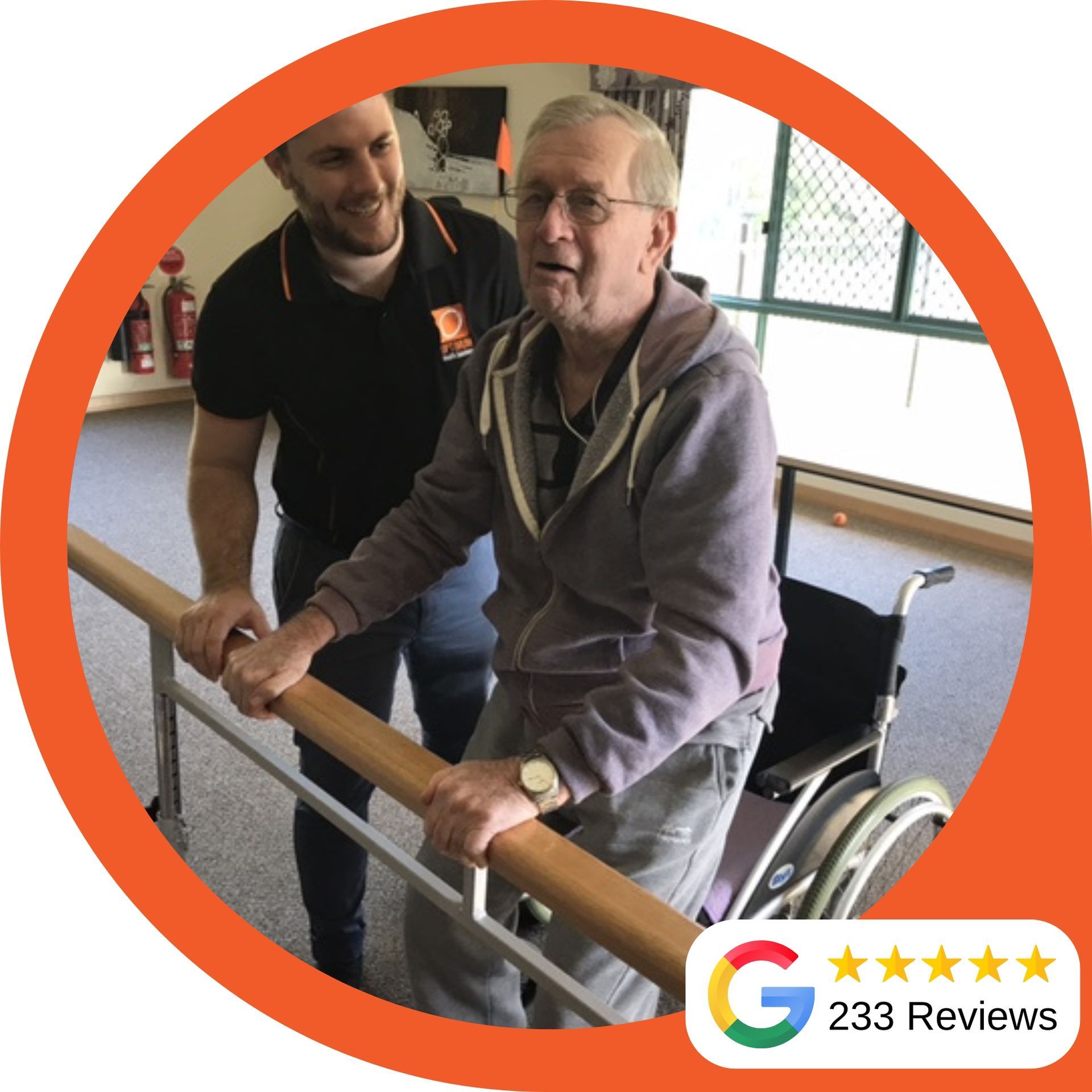Common Physiotherapy Techniques and Maneuvers for Vertigo
Understanding Vertigo & Its Causes
Vertigo isn’t just feeling dizzy—it’s a sensation that your surroundings are spinning, even when you’re standing still. It can range from mildly annoying to completely debilitating. While vertigo itself isn’t a condition, it’s usually a symptom of an underlying issue, such as an inner ear disorder, head injury, or neurological problem.
If you’ve ever felt like you were on a rollercoaster while simply standing up, you know how unsettling vertigo can be. It can affect your balance, make everyday activities difficult, and even increase the risk of falls.
How Physiotherapy Treatment for Vertigo Helps
Physiotherapy treatment for vertigo focuses on retraining your balance system, reducing dizziness, and helping your brain adapt to new movement patterns. It’s a non-invasive, medication-free approach that can make a big difference for people dealing with recurring vertigo episodes.
So, how is it done?
- Pain Reduction & Symptom Management – Targeted exercises can help reduce dizziness and discomfort over time.
- Improving Posture & Balance – Many vertigo patients develop poor posture to compensate for dizziness. Physiotherapy helps correct this.
- Strengthening Core & Supporting Muscles – A strong core helps stabilise your movements, reducing sudden vertigo episodes.
- Restoring Mobility & Confidence in Movement – Many people avoid certain activities due to fear of dizziness. Physiotherapy helps restore confidence in movement.
- Preventing Recurrence – With the right techniques, you can train your body to react better to vertigo triggers.
If left untreated, vertigo can impact your quality of life. Physical therapy for vertigo offers a proactive way to regain control.
Physiotherapy Techniques for Vertigo
Physiotherapy treatment for vertigo includes targeted techniques designed to reduce dizziness, improve balance, and help the brain adapt to movement. A physiotherapist will assess your condition and recommend the best approach based on your symptoms.
Here are some common physiotherapy techniques used to treat vertigo:
Canalith Repositioning Maneuvers (Epley, Semont, and Foster Maneuvers)
These are designed to treat benign paroxysmal positional vertigo (BPPV), the most common cause of vertigo. The exercises involve specific head movements to reposition loose calcium deposits (canaliths) in the inner ear, restoring normal balance.
Vestibular Rehabilitation Therapy (VRT)
This customised exercise-based program helps the brain adapt to balance changes caused by inner ear disorders. It often includes:
- Gaze stabilisation exercises to improve focus.
- Balance training to reduce dizziness.
- Habituation exercises to help the brain adjust to vertigo triggers.
Brandt-Daroff Exercises
A self-managed exercise technique used to reduce vertigo symptoms over time. These involve a series of head and body movements designed to desensitise the inner ear’s response to movement.
Balance Training Exercises
Many people with vertigo struggle with coordination and balance. Physiotherapy includes targeted balance drills to improve stability and prevent falls.
Gaze Stabilisation Techniques
If you experience dizziness when moving your head, gaze stabilisation exercises train your brain to focus while in motion. These exercises help your eyes and inner ear work together more effectively.
Manual Therapy (Neck Mobilisation & Soft Tissue Techniques)
If vertigo is linked to neck tension or cervical spine issues, manual therapy can help release tight muscles and restore mobility.
TENS & Ultrasound Therapy
These pain-relief techniques aren’t direct treatments for vertigo but can help with related issues like muscle tension, headaches, and stress-related dizziness.
Hydrotherapy for Gentle Rehabilitation
Water-based physiotherapy provides a low-impact way to retrain balance without putting too much strain on the body.
The right combination of these techniques can significantly reduce vertigo symptoms and improve quality of life.
Physical Exercises for Vertigo
So, what is the best physical exercise for vertigo?
The best exercise depends on the cause of your vertigo. For benign paroxysmal positional vertigo (BPPV), the Epley maneuver is often the most effective, helping to reposition inner ear crystals that cause dizziness. If your vertigo is linked to vestibular dysfunction, gaze stabilisation exercises and balance training can help retrain your brain to process movement correctly. A physiotherapist can assess your symptoms and recommend the right exercises to restore balance and reduce dizziness.
Physiotherapy vs. Other Treatments for Vertigo
When dealing with vertigo, there are various treatment options. Here’s how physiotherapy compares to other common approaches:
- Physiotherapy vs. Medication – While medication can reduce dizziness in the short term, physiotherapy treatment for vertigo addresses the root cause, making it a longer-lasting solution.
- Physiotherapy vs. Chiropractic Care – Chiropractors focus on spinal alignment, which may help some cases of vertigo, but physiotherapy directly targets balance and vestibular function.
- Physiotherapy vs. Surgery – Surgery is rarely needed for vertigo. Physiotherapy provides a non-invasive alternative that can prevent the need for medical interventions.
- Physiotherapy vs. Osteopathy – Osteopaths work with the musculoskeletal system, but physiotherapy focuses on targeted exercises that help retrain the brain’s response to movement.
- Physiotherapy vs. Acupuncture – While acupuncture may help relieve stress-related dizziness, physiotherapy actively works to restore balance and mobility.
Physiotherapy is one of the most effective long-term treatments for vertigo, with minimal side effects and no need for medication.
Finding the Right Physiotherapist in Australia
If you’re struggling with vertigo, working with the right physiotherapist is key. Look for:
- Qualified and Experienced Professionals – Choose someone with experience in vestibular rehabilitation.
- A Clinic Near You – If you’re looking for a physiotherapist, we offer physio in Coffs Harbour, Grafton, Ballina, Tweed Heads, Casino, Lismore and the Gold Coast.
- Questions to Ask – Ask your physiotherapist about their experience treating vertigo, how long recovery may take, and what home exercises you can do.
- Medicare & Private Health Insurance Coverage – Many physiotherapy treatments for vertigo may be covered, reducing out-of-pocket costs.
- NDIS & Physiotherapy for Chronic Dizziness – If vertigo is part of a chronic condition, NDIS may fund physiotherapy sessions to help with symptom management.
- Home-Based Physiotherapy & Telehealth Options – If you’re unable to attend a clinic, home visits and online physiotherapy consultations can ensure you still receive the right care.
Take Control of Your Vertigo with Physiotherapy
Vertigo can be overwhelming, but the right physical therapy for vertigo can make a huge difference. Whether it’s manual therapy, vestibular rehabilitation, or balance exercises, physiotherapy helps retrain your brain and body to function without dizziness.
If you’re ready to stop letting vertigo control your life, book a physiotherapy session today. Whether it’s an in-clinic appointment or a mobile service, there’s support available to help you regain confidence in movement.



